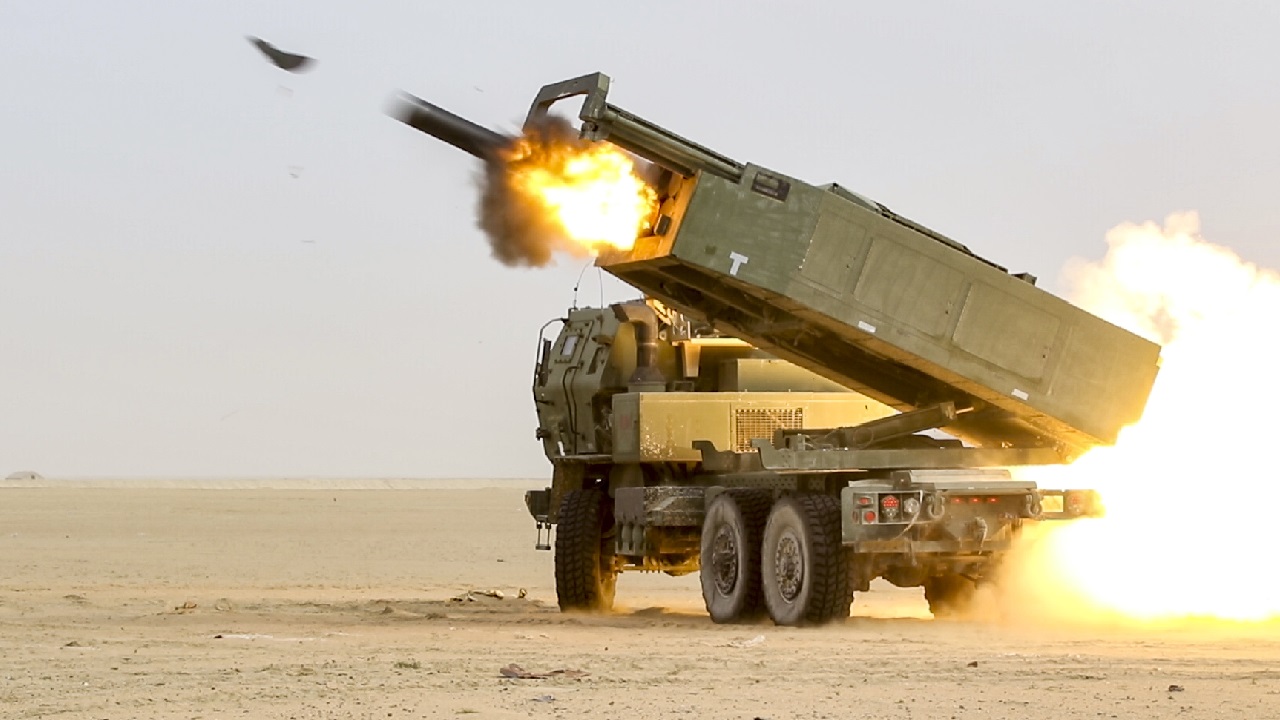A press briefing in Moscow on Wednesday by the Russian Defense Ministry claimed that they had located and destroyed an ammunition depot near the central Ukrainian city of Uman. Moscow said that the depot stored American-made M777, 155mm howitzers, as well as ammunition for the American HIMARS missile systems.
Moscow claimed that they destroyed 300 missiles in the depot strike, which is notable because the Russians have come to fear and respect the HIMARS due to its range and accuracy. But the report also highlights a potential crisis area for Ukrainian forces.
With the Ukrainians now largely reliant on Western weapons and ammunition, can the US and other Western allies keep up with the ammunition needs for the 155mm artillery pieces and, more importantly, for the HIMARS systems?
US Sending Another Massive Military Aid Package:
On Monday, the Pentagon announced that they were sending Ukraine another huge military aid shipment worth $1 billion dollars, including ammunition for the HIMARS missile systems but not any more launchers. This brings the total of military aid sent to Kyiv to nearly $10 billion dollars since the war began in late February.
The US has sent Ukraine 16 of the missile systems that have been credited with turning the tide in the war. With an increased range and excellent accuracy, HIMARS has allowed Ukrainian forces to attack Russian command posts and ammunition depots using far less ammunition than previously used.
Last week, the General Staff of the Armed Forces of Ukraine said its troops used HIMARS to hit 15 logistical warehouses that store ammunition, fuel, and lubricants. Ukrainian Brigadier-General Oleksiy Gromov added that HIMARS and other Western-supplied Multiple Launch Rocket Systems (MLRS) have enabled Ukrainian forces to hit 10 Russian command bunkers, including three divisional level command posts, in the past week.
HIMARS systems have been hailed as nearly single-handedly drawing the conflict to a virtual standstill, with the Russian offensive being stalled in the Donbas region of eastern Ukraine.
While that is rather simplifying things, as Russia has suffered horrendous losses of personnel and equipment, one can’t ignore the missile systems’ effect on the fighting since the US began delivering them in early June.
UK To Send Three More M-270 MLRS To Ukraine:
UK Defense Minister Ben Wallace said on Wednesday to the BBC that he will now send three more M-270s to Ukraine, as well as a “significant” number of missiles they launch, which are the same missiles that HIMARS systems use.
“Our continued support sends a very clear message: Britain and the international community remain opposed to this illegal war and will stand side by side in providing defensive military assistance to Ukraine to help it defend itself against Putin’s invasion,” Wallace said while at a conference in Copenhagen.
The M-270 is a tracked vehicle that carries 12 missiles and is in use by several countries. In 2019, the United States Army awarded Lockheed-Martin a $362 million contract to recapitalize 50 of the U.S. Army’s M-270 (MLRS) launchers.
This contract is intended to upgrade the Army’s fleet of 225 MLRS M270A1 launchers, and 160 decommissioned M270’s slated for demilitarization to M270A2s. The upgraded variant includes the new Common Fire Control System (CFCS) to allow the use of the Precision Strike Missile (PrSM). The update also includes a new 600 hp engine, upgraded and rebuilt transmissions, and improved cabin armor protection for the crew members against IEDs.
How Many HIMARS Does The US Have?
With the latest aid package slated for Ukraine, the devil is in the details. It has been reported that the HIMARS missiles going to Kyiv are being taken from existing US stocks which also has been the case for earlier aid shipments.
The Pentagon didn’t specify how many HIMARS missiles are included in the shipment, which will include 75,000 rounds of 155mm artillery ammunition, 20 120mm mortar systems, 20,000 rounds of 120mm mortar ammunition, munitions for advanced surface-to-air missile systems, 1,000 Javelin and hundreds of AT4 anti-armor launchers, 50 armored medical treatment vehicles, Claymore anti-personnel munitions, C-4 explosives, and medical supplies.
Both Latvia and Lithuania also plan on purchasing HIMARS in the near future.
The Pentagon has ordered 900 of the HIMARS and thus far has received 540 of them. The Army has eight battalions of HIMARS, while the Marine Corps has two battalions of the missile systems.
The military has always kept a stock of ammunition to supply its forces in the case of armed conflict. With the focus on China right now, the amount of ammunition stocks is unknown. But it must be a concern within Pentagon circles to deplete their own stocks too much while supporting Ukraine’s fight against Russian aggression.
One question that is always asked among military analysts is “how long would Ukraine last without MLRS systems such as HIMARS?” The short answer is not very long. A while back, 19fortyfive.com spoke with a former Army official who had been meeting with the head of the Slovakian Defense Ministry. The feeling was that Ukraine, while already running out of ammunition for the legacy Soviet Union era of artillery pieces, would possibly run out of ammunition by September.
This is why this latest package, as well as the UK one, is sorely needed. The Pentagon is promising a “steady stream” of the GPS-guided HIMARS missiles, but with a stated plan for a counteroffensive to take Kherson, Ukraine will need more than HIMARS to be successful.
Steve Balestrieri is a 1945 National Security Columnist. He served as a US Army Special Forces NCO, and Warrant Officer before injuries forced his early separation. In addition to writing for 19fortyfive.com and other military news organizations, he has covered the NFL for PatsFans.com for over 11 years. His work was regularly featured in the Millbury-Sutton Chronicle and Grafton News newspapers in Massachusetts.

